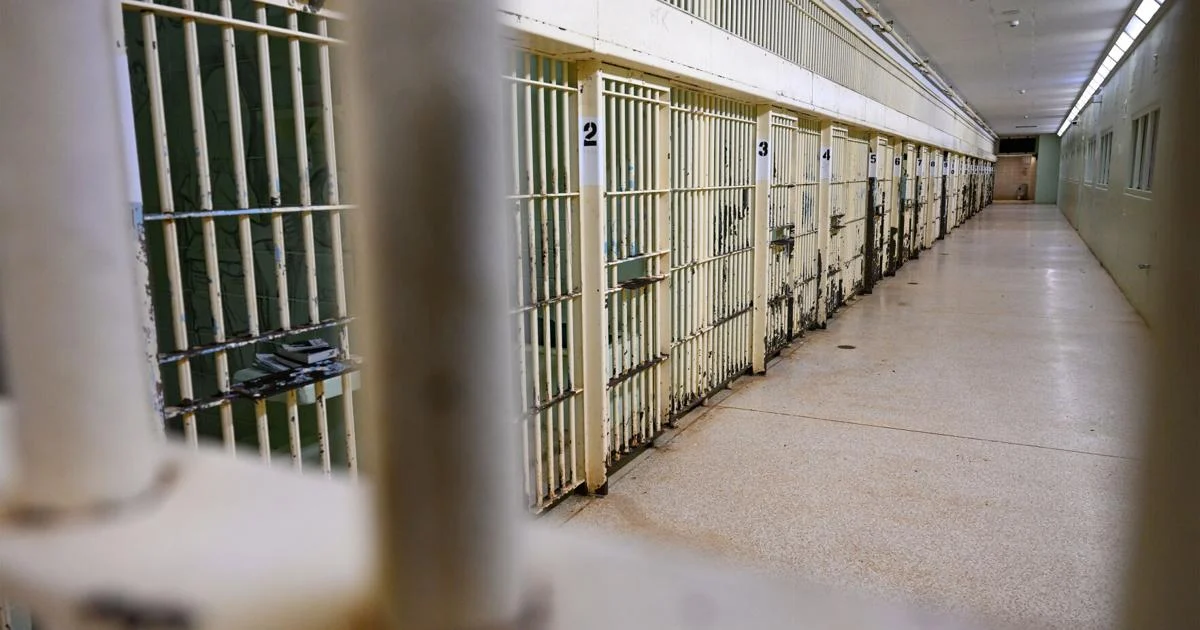
Each month, East Baton Rouge Parish taxpayers spend $368,000 to send inmates to prisons in other parishes, almost four times the $96,000 they spent just six years ago.
While the COVID crime spike and new laws have played a role, many parish officials say the main problem is simple: The nearly 60-year-old parish prison is falling apart.
Rusted bars and ceilings, crumbling sewage pipes and long-obsolete parts often fail, taking sections — sometimes entire wings — out of commission and leaving the jail with too few beds.
On top of sending inmates elsewhere, in recent years the parish has spent millions annually on repairs to keep what beds open that it can.
Some leaders now question whether the constant patchwork repairs are wasting taxpayer dollars. They wonder if building a new prison — with enough beds and a better setup for rehabilitation — might save money in the long run.
But those officials face the same problem as someone who would rather buy a new car than keep shelling out for repairs Where are they going to get that much money all at once?
More than $12,000 every day
Throughout any of the jail’s wings, long ceiling cracks — some stretching nearly 20 feet — are a common sight. They’re more than just signs of decay: rain seeps through the gaps to create standing pools of water throughout the areas where inmate live, prison officials say.
Many of the thousands of bars throughout the facility are covered in rust.
Warden Cathy Fontenot says a facility that is falling apart is dangerous.
In her office is a box that is added to regularly. It is filled with weapons made from the crumbling structure’s walls, wire fencing, rusted metal doors, piping and more — a growing museum exhibiting how the decaying facility threatens officer and inmate safety every day.
The costs of deterioration are becoming increasingly apparent in the city-parish’s budget.
A recent weekly count showed 481 adult prisoners and 17 17-year-olds being held outside of East Baton Rouge Parish.
The city-parish pays $29.39 a day to house an adult elsewhere. Seventeen-year-olds cost much more — $175 — due to the increased services that non-adults are required to receive.
The East Baton Rouge Sheriff’s Office is responsible for staffing and running the jail, while the city-parish is in charge of maintaining its physical condition.
As the facility’s deterioration has ramped up in recent years, other factors also contributed to the surge in inmates being held outside of the prison. The return to normalcy after COVID also played a major part in the rising costs associated to housing inmates, according Chief Administrative Deputy and Public Information Director for the sheriff’s office Casey Rayborn Hicks.
Transfers were put on hold during the pandemic, Hicks said, and the oldest areas in the most need of repairs and maintenance were forced to be opened temporarily to hold these inmates. But after operations returned back to normal, units needed to be shut down and repaired so the population was sent to facilities in the northern parishes of Louisiana.
“Once we could obtain more options to house elsewhere, we shut down those units and returned to utilizing the beds opening in the northern jails,” Hicks said.
As pandemic restrictions eased from 2021 into 2022, the amount spent on holding inmates in other parishes nearly doubled from $1.3 million a year to $2.5 million. And it has only increased since then.
Because city-parish maintenance projects were slowed during the pandemic, jail projects were also neglected, Hicks said. When the world began to open back up, officials closed parts of the jail down, which meant more prisoners being sent elsewhere.
“City-parish maintenance projects were also picking up, which results in us having to clear living areas so that work can proceed,” Hicks said.
In 2023, the city-parish spent $3.7 million to house inmates in other parishes. In 2024, that number rose to $3.9 million.
The city-parish is on pace to spend $4.4 million to house inmates elsewhere in 2025 — a total cost of more than $12,000 each day.
The money comes from the city-parish’s general fund, which taps the 2% sales tax collected parish-wide. Taxes from Baton Rouge and the parish’s unincorporated areas go into the general fund, but those collected in Baker, Central, St. George and Zachary stay in those cities. As has been pointed out in past debates, that means those cities do not help cover the costs of maintaining the jail or housing inmates elsewhere.
Cracked walls, soaring bills
Sending inmates out of the parish is just one part of the equation when it comes to soaring costs.
Metro Councilman Darryl Hurst, a member the East Baton Rouge Jail Task Force, compares the situation to someone being able to afford parts for a 20-year-old car but not having enough money for a down payment on a new one, even though a purchase might make the most fiscal sense.
According to the city-parish finance department, spending on jail maintenance and repairs this year is expected to more than triple the $1.38 million spent in 2020. A steady year-over-year increase has led to $4,703,709 in maintenance and repair costs for 2025.
Between maintenance and inmates housed elsewhere, the city-parish is on track to spend $9,119,661 this year.
“We’re looking at a lot of ways to explore this and get this done, but we’re not at the finish line,” Hurst said. “We want to ensure that we have the least amount of impact on the taxpayer financially and the greatest amount of impact on the taxpayer with a return on investment where whatever we do decreases crime in our city.”
Cost estimates for a new jail have varied widely in recent years and no official plans have been made public. Officials say it would likely be in the range of hundreds of millions of dollars.
There is no current plan or cost estimate for a new jail, and officials declined to say what the potential cost would be. About a decade ago, Metro Council rejected a $250 million bond package that would have funded a new jail and juvenile justice center, though a current price tag would likely be larger due to increased construction costs.
‘I would not let my dog eat here’
For Hurst, the living conditions for prisoners are as much of a problem as the ever-increasing financial burden. Crowded inmates are stressed-out inmates, Hurst says, which can lead to more altercations.
“It’s identical to claustrophobia, right?” Hurst said. “If you really want to see how somebody is, let them get stuck on an elevator with 10 other people.”
Rats are common throughout the jail, even in areas where food is served.
“I would not let my dog eat there,” Hurst says.
The vast majority of the inmates are being held pre-trial, meaning they have not been convicted of the crimes they are accused of.
Modern jails hold prisoners behind safety glass, not bars, Hurst says, which makes them feel less like caged animals. Newer facilities are also better set up to offer education and programming like drug and mental health counseling. He says countless studies show those services directly result in lower crime rates because the former inmates are less likely to re-offend once back in society.
“It’s about programming. It’s about re-entry,” Hurst said. “It is about, ‘How do I take somebody’s misfortune, which puts them in jail, and turn that around into something that’s different and positive for society?'”
‘I want to be part of the solution’
Jail conditions have long been an issue for local leaders, corrections officers and inmates and their families.
While East Baton Rouge Mayor-President Sid Edwards is currently focused on a tax rededication plan to bolster the city-parish budget, his administration says addressing the financial problems related to the jail is still a priority.
“Mayor Edwards recognizes the significant costs associated with both maintaining the jail facility and housing inmates out of parish,” said city-parish spokesperson Falon Brown. “At this time, the administration continues to evaluate these expenses in the context of public safety needs, legal requirements, and long-term financial planning.”
Edwards has personally visited the jail and has discussed potential solutions with Gov. Jeff Landry, Brown said.
Council member Jen Racca agrees the jail is an issue but does not see many options readily available to build a new facility.
“I do not believe that the public wants to be taxed to better house prisoners that have committed crimes,” Racca said. “I may be wrong, but I can’t imagine many of my constituents wanting to do that.”
She says the previous mayoral administration under Sharon Weston Broome missed the opportunity to address the issue when $165 million federal dollars flowed to the city-parish through the American Rescue Plan Act.
“The whole purpose of ARPA dollars was for infrastructure improvements,” Racca said. “I made recommendations to the previous administration to either build a new juvenile detention center or to build a new prison, or at least put a portion of those funds to do so. But that was obviously not a priority. Money went elsewhere.”
Instead, some of that money was given to initiatives like low-income housing projects — some of which still haven’t broken ground four years later — and violence prevention groups and programs.
Hurst says that if a solution is finally implemented, it will require taxpayers to act selflessly, putting Baton Rouge first and making sacrifices to help make Louisiana’s most populous parish safer.
“A lot of times, people who are affluent or people who are well-connected never see themselves looking like the people that are behind bars, so they cannot have a direct image in their mind’s eye that anything dealing with the jail will impact them until it happens to them,” Hurst said. “Well, I see how it’s affecting other people. I see how it’s affecting our community. And we are part of the solution or part of the problem, and I want to be part of the solution.”



